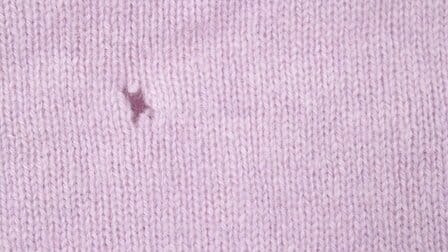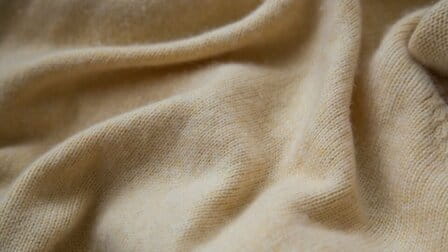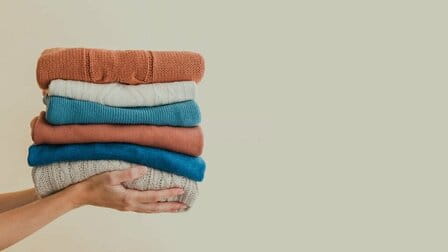When it comes to choosing the most durable material for sweaters, there are a few key factors to consider. The fiber content, construction, and care of the sweater will all impact how well it holds up over time. Here's an in-depth look at some of the most durable options for sweater materials.
Wool
Wool is one of the most popular and recommended materials for durable sweaters. Sweaters made from wool are naturally wrinkle-resistant and hold their shape well. Merino wool in particular is known for its strength, softness, and durability. The fibers have a protective outer layer that prevents damage and pilling. 
Cashmere
Sweaters made with 100% cashmere are prized for their luxurious softness and warmth. Cashmere comes from cashmere goat hair, which is fine and lightweight but also strong. It's one of the strongest natural fibers, with excellent resiliency against pilling or fraying over time. However, cashmere requires gentle care. Following washing and drying instructions is key to maintaining the longevity of cashmere sweaters. While exquisite, cashmere may not hold up to rugged daily wear as well as wool. But with proper mending and care, a quality cashmere sweater can last for decades.
Cotton
Cotton is affordable, soft, breathable and easy to care for. But it lacks the natural durability and structure of fibers like wool or cashmere. Pilling is common with cotton sweaters after continuous wear and washing. Cotton is best blended with other fibers like polyester to improve its durability. 
Synthetic Blends
Many sweater fabrics today contain blends of natural and synthetic fibers. Nylon and polyester blended with wool or cotton creates a more durable, wrinkle-resistant fabric. The synthetic fibers add strength and structure. But sweaters with a high percentage of synthetics may not be as breathable. Acrylic is extremely affordable but pills easily. Opt for acrylic-rich sweaters with tighter knits. Sweaters blended from natural and synthetic materials provide the best balance of comfort, affordability and longevity.
Tips for Maximizing Sweater Durability
- Select sweaters knit tightly from quality natural fibers like wool, cashmere or cotton
- Check fabric care instructions and avoid high heat drying, bleaching or hot water washing
- Hand wash when possible using a gentle detergent designed for delicates
- Fold sweaters with care or hang on wide, non-slip hangers to avoid stretching
- Spot clean stains quickly and make repairs as needed to avoid damage
- Store off-season sweaters properly to prevent moths, yellowing or other deterioration
- Invest in a few versatile, well-made sweaters rather than many cheap versions

With the right fiber selection and proper care, most quality sweaters can deliver lasting wear for 5-10 years or longer. Prioritize sweaters made of wool, cashmere or cotton for optimal durability. Synthetic blends also improve lifespan. Avoiding heat, washing delicately, spot cleaning, and proper storage will help safeguard your sweater investment. Choosing versatile neutral colors in classic silhouettes also promotes cost per wear. With some diligence to care and maintenance, it's possible to keep favorite wool or cashmere sweaters in rotation for a decade or more.
FAQ
What is the warmest and most durable sweater material?
100% merino wool is widely considered the warmest and most durable sweater material. The fine fibers provide insulation against cold and the natural oils make it resistant to damage.
Is cashmere more durable than wool?
Cashmere and wool have similar longevity when cared for properly. But wool may be slightly more durable for hardwearing daily use. Cashmere requires more delicate laundering.
Is cotton or wool more durable?
Wool is generally more durable than cotton. The fibers are stronger and more resilient, maintaining structure better over time. Cotton breaks down faster, causing stretching and pilling.
How long should a good wool sweater last?
With proper care, a 100% wool sweater should last for 5-10 years or more. High quality wool like merino offers the most longevity, lasting for a decade plus.
What ruins wool sweaters?
Wool sweaters are damaged most by high heat, agitation, and improper storage. Using hot water, putting them in the dryer, or excessive agitation destroys the fibers. They also need to be stored properly to avoid moths or yellowing.
Conclusion
When evaluating the most durable materials for sweaters, natural fibers like wool, cashmere and cotton have distinct advantages over synthetic blends. In particular, high quality merino wool offers the optimal balance of strength, comfort and longevity. With proper construction and fabric care, wool sweaters can last for over a decade of consistent wear. Cashmere is extremely fine and soft but requires more gentle care. Cotton sweaters may pill and degrade faster, but still offer years of wear if crafted well and cared for properly. Synthetic blends allow for wrinkle-resistant, durable fabrics but tend to lack breathability.
Regardless of material, following garment care instructions, handling sweaters with care, spot cleaning when needed, and storing properly will maximize the lifespan of any sweater. Investing in better quality materials and construction is advised for the most cost per wear over time.













